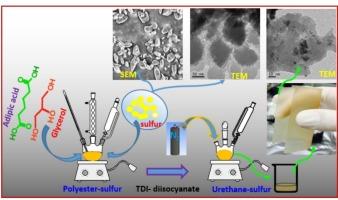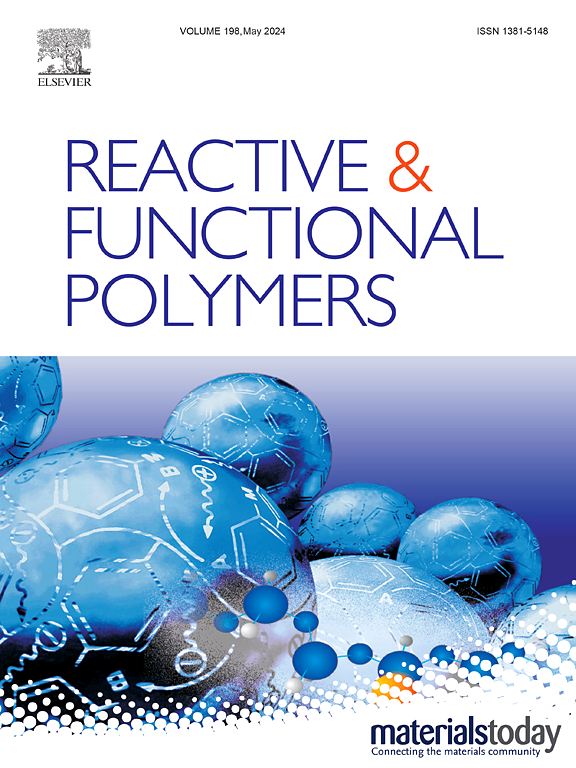A simple approach for fabrication of a promising hyperbranched polyurethane-urea - sulfur (HBPU-Urea-Sulfur) hybrid coating material through the utilization of elemental sulfur
Abstract
Hybrid coating based on hyper-branched polyurethane and elemental sulfur was synthesized by in-situ polycondensation and urethane reaction. The effect of Sulfur in the hydrogen bonding, thermo-mechanical properties and surface morphology of HBPU-Urea-Sulfur hybrid coating at 2 wt% concentration was notable objective of this work. Deconvolution studies confirmed that more hydrogen bonding interaction happened in HBPU-Urea coating. HBPU-Urea coating indicated better young's modulus and tensile strength compared to HBPU-Urea-Sulfur hybrid coating. Interestingly, the elongation percentage increased from 12% for HBPU-Urea to 18% for HBPU-Urea-Sulfur hybrid coating. Thermal stability of the coatings was examined by thermogravimetric analysis (TGA) depicted a 10 °C decrease in thermal stability for 2 wt% sulfur filled hybrid coating. Dynamic mechanical thermal analyzer (DMTA) analysis showed lower glass transition temperature and crosslinking density after addition of sulfur nanoparticles. The HBPU-Urea-Sulfur hybrid coating displays a smooth surface because the size of the sulfur nanoparticles is reduced, leading to uniform dispersion and achieve good compatibility. The HBPU-Urea-Sulfur hybrid coating possess superior antibacterial properties against Escherichia coli (E. coli) and Staphylococcus aureus (S. aureus). The antibacterial activity of coating is dependent on the presence of sulfur in the coating.


 求助内容:
求助内容: 应助结果提醒方式:
应助结果提醒方式:


